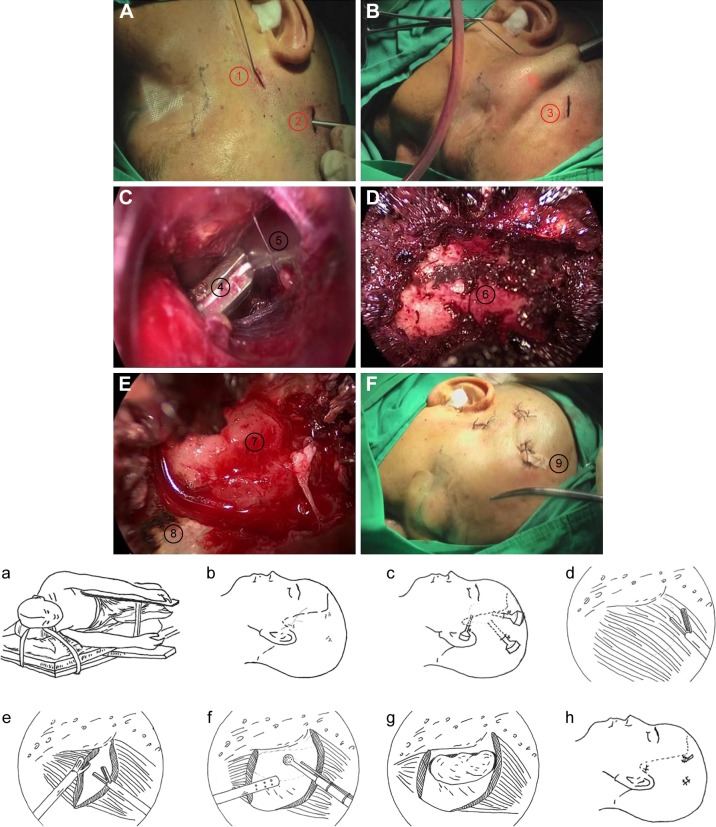Figure 1.
Decompression of lateral wall.
Notes: (A, B) “Three-point” incisions. ①=First cut; ②=second cut; ③=third cut. (a, b) Diagrammatic sketch of the “three-point” incisions. (C) The surgical field building. In the endoscopic vision through the second cut, ultrasonic scalpel and other auxiliary instruments were placed through the first cut and the third cut; ④,⑤=Surgical instruments. (c) Diagrammatic sketch of the surgical field building. (D) The lateral orbit wall exposure. Ultrasonic scalpel was used to cut about 3–4 cm2 temporalis away behind the zygomatic process. The temporalis was moved away to expose the lateral orbit wall. The temporalis attached to the temporal fossa was cut through to avoid soft tissue depression after operation. ⑥=Bone of the lateral orbit wall in the fossae termporalis. (d, e, f) Diagrammatic sketch of the lateral orbit wall exposure. (E) Windowing of lateral wall of bone and fat. The electric grinding head was used to wear through the exposed lateral orbit bone wall and the orbital fat protruded sufficiently. ⑦=Orbital fat; ⑧=lateral orbit bone wall. (g) Diagrammatic sketch of the windowing of lateral wall of bone and fat. (F) Drainaging. Check the wound and find no active bleeding. Put the rubber membrane for drainaging at the orbit window and then close each cut. ⑨=Drainage strip. (h) Diagrammatic sketch of drainaging.

